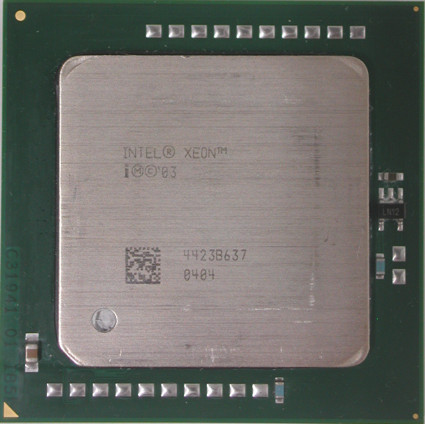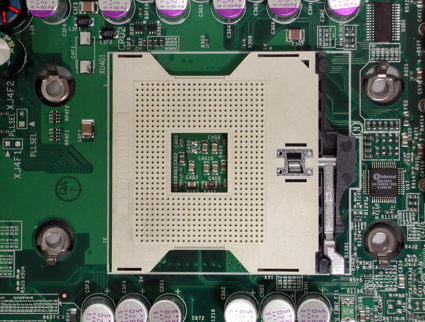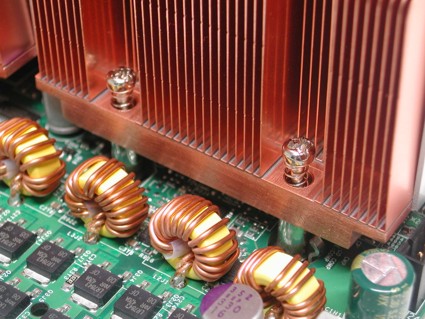AMD's Opteron 250 vs. Intel's Xeon 3.6 GHz in a Workstation Duel of the Elite
Intel Xeon Processor With Nocona Core
The new Xeon processors with Nocona core are most easily recognizable by the absence of condensers.
When comparing Prestonia and Nocona, quite a bit has actually been accomplished. The retention module has disappeared because more efficient cooling elements have become necessary as a result of increased heat loss. These, in turn, are often so heavy that hefty jolts in transit can inflict damage on the motherboard. So Intel has found the solution in screwing the cooling element directly to the mounting plate of the motherboard, and thus in effect to a part of the casing.
This method has advantages when installing the heatsink, for where previously you could very easily slip with a screwdriver, the attachment is now much less dangerous.
As already mentioned in the introduction, the Xeon Nocona corresponds by and large to the Pentium 4 Prescott: 90 Nm fabrication, FSB800 (200 MHz FSB clockspeed) as well as a maximum of 3.6 GHz. Certainly the most significant innovation in the application of the server is, in all sincerity, the FSB capacity, which has increased by 50%, and which now, instead of 4.2 GB/s (FSB533) amounts to a regular 6.4 GB/s (FSB800).
We tested the Xeon with 3.6 GHz and FSB800.
The Intel Xeon still also works with Socket 604.
One of the changes: The heatsinks are now directly screwed to the rear panel of the casing.
Get Tom's Hardware's best news and in-depth reviews, straight to your inbox.
Current page: Intel Xeon Processor With Nocona Core
Prev Page What's Next? Next Page HyperThreading As In The Past
Patrick Schmid was the editor-in-chief for Tom's Hardware from 2005 to 2006. He wrote numerous articles on a wide range of hardware topics, including storage, CPUs, and system builds.
-
bgd73 hey thanks for this. There is errors in the test, especially in memory speed of xeons, in fact, it is ridiculous. I am going for older 7525 chipset in CEB motherboard...these machines are just getting started. I be sure to go for HT. thanks.Reply



